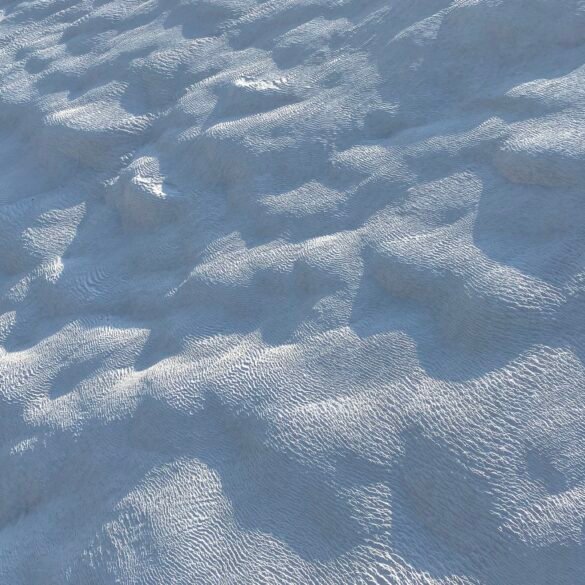In moments of blissful daydreaming, I often imagine what I would do if I had unlimited time and was in better physical shape. One thing that immediately pops into my mind is embarking on a long-distance hike. Wouldn’t it be great to walk the entire length of the Appalachian Trail from Maine to Georgia or complete a multi-day Camino de Santiago trek in northern Spain? These musings hit close to home as I planned the itinerary for our recent trip. I was staring at the map of southwestern Türkiye, where we were heading, and couldn't ignore one obvious attraction of the region—the Lycian Way. We already wrote about our discovery of Lycia—the ancient state located in modern-day Türkiye, known for its rock-strewn funerary architecture. But there was more to Lycia. Experienced travelers were raving online about hiking the Lycian Way. And we wanted a piece of it.
So, what is the Lycian Way? This long-distance hiking trail runs through the Teke Peninsula, connecting numerous places of ancient Lycia. The trek is nearly 300 miles long and roughly connects Fethiye and Antalya. It runs along the coast, over the mountains, and through pine tree forests, providing unparalleled views of the Mediterranean Sea, villages, and Lycian ruins. Assuming you cover 10 miles a day, it takes approximately a month to complete the trek.
There was no way we could do the whole hike. We had only one week to spend in the region, and going the entire length would require us to slog an unrealistic 40 miles a day. While we do enjoy shorter trails, hiking even 10 miles a day for 30 days might be too much of an ask. A 15-mile day hike in Patagonia a decade ago left us sore for days with multiple blisters that took time to heal. Another reason the plan was dead on arrival was the timing of our visit. The best time to hike the Lycian Way is early spring or late fall to avoid unbearable heat. Our trip was in the first week of September, with temperatures jumping daily well above 90 degrees. Succumbing to heat stroke while traveling already happened to us in the past and is not something we are looking to repeat.
Still, we wanted to get a taste of the Lycian Way. The solution was to do a little bit of hiking near the start of the trail and then, considering the limited time and resources we had, use the shortcuts described below to see other portions of the Lycian Way. The compromise was acceptable, as most people don't hike the entire trek anyway.

1. Hiking the Lycian Way
We did our hike outside of Fethiye. After driving for about 20 minutes from the town center, we parked our rental on the side of the road and started to climb a hill. The path was narrow and barely visible and was weaving through overgrown bushes, constantly threatening to tear our clothes with some serious spikey thorns. We scrambled and fought through vegetation until we finally saw a clearing in the path from which the entire town could be seen—hundreds and hundreds of houses precariously clinging to the hill. The view was incredible, but … most houses were missing roofs, some were missing walls, and there were no people in town. Whaaaaaat? What is this?? We stood there staring at …. the ghost town of Kayaköy.
Known in the past as Karmylassos or Levissi, during Ottoman rule, Kayakoy was a non-Muslim town populated mainly by minority Christian Greeks. As the Ottoman Empire was crumbling in the aftermath of World War I, Türkiye was fending off other nations trying to get a piece of its territory. In 1919, Greece invaded, and for the next three years, the countries fought over the borders and control over the Aegean Sea. When the war ended (spoiler: Türkiye, led by Mustafa Kemal Atatürk, won) and present-day borders were established, the countries engaged in a population swap. Christian Greeks living in Türkiye were sent to Greece, while Muslim Turks of Greece were shipped to the newly established Republic of Türkiye. The exchange likely prevented further ethnic cleansing on both sides. The idea of swapping populations was promising on paper. However, the number of Muslims Türkiye received was significantly lower than the number of Christians it sent to Greece. As a result, many former Greek towns in Türkiye were left deserted as there were not enough newcomers to populate them. Muslim Turks eventually came to the Kayakoy area, but they chose to settle in the valley rather than on the barren hills of the abandoned Greek town.
We stood there in total silence, looking at the ruins and imagining a bustling Greek town of the past. This was late afternoon, and grey roofless houses were beautifully reflecting the setting sun. For the next hour and a half, we scrambled up and down uneven streets, poked our heads inside the houses, and even climbed over the fence to peek inside an abandoned church. Some walls retained the blue and white paint and Greek-theme decorations, leaving it to our imagination what this town looked like a century ago. We hiked and roamed through the ruins until sunset. After the sun disappeared behind the mountains, it was time to go. The last thing we wanted was to get stranded here and try to find our way in complete darkness.
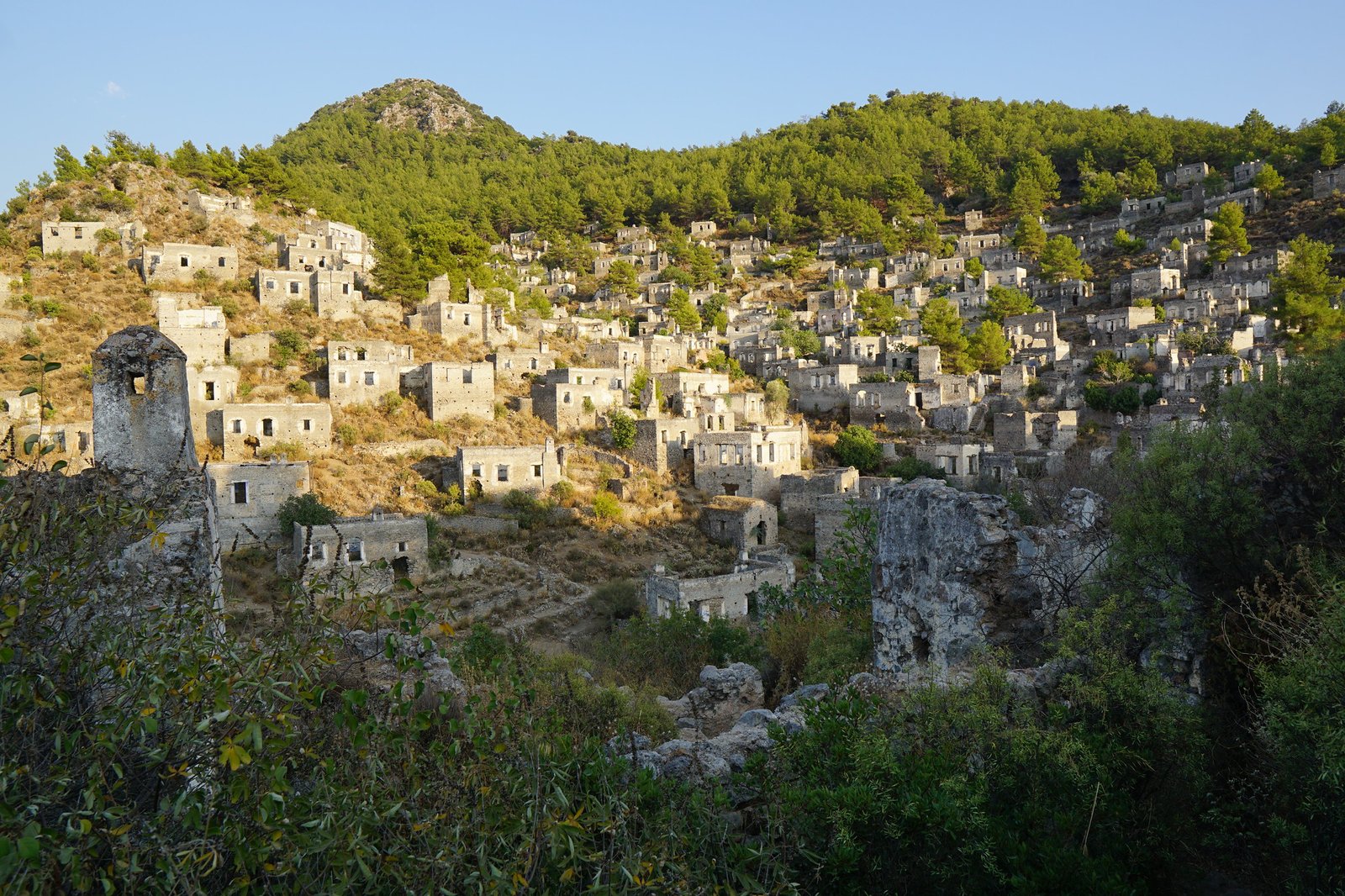
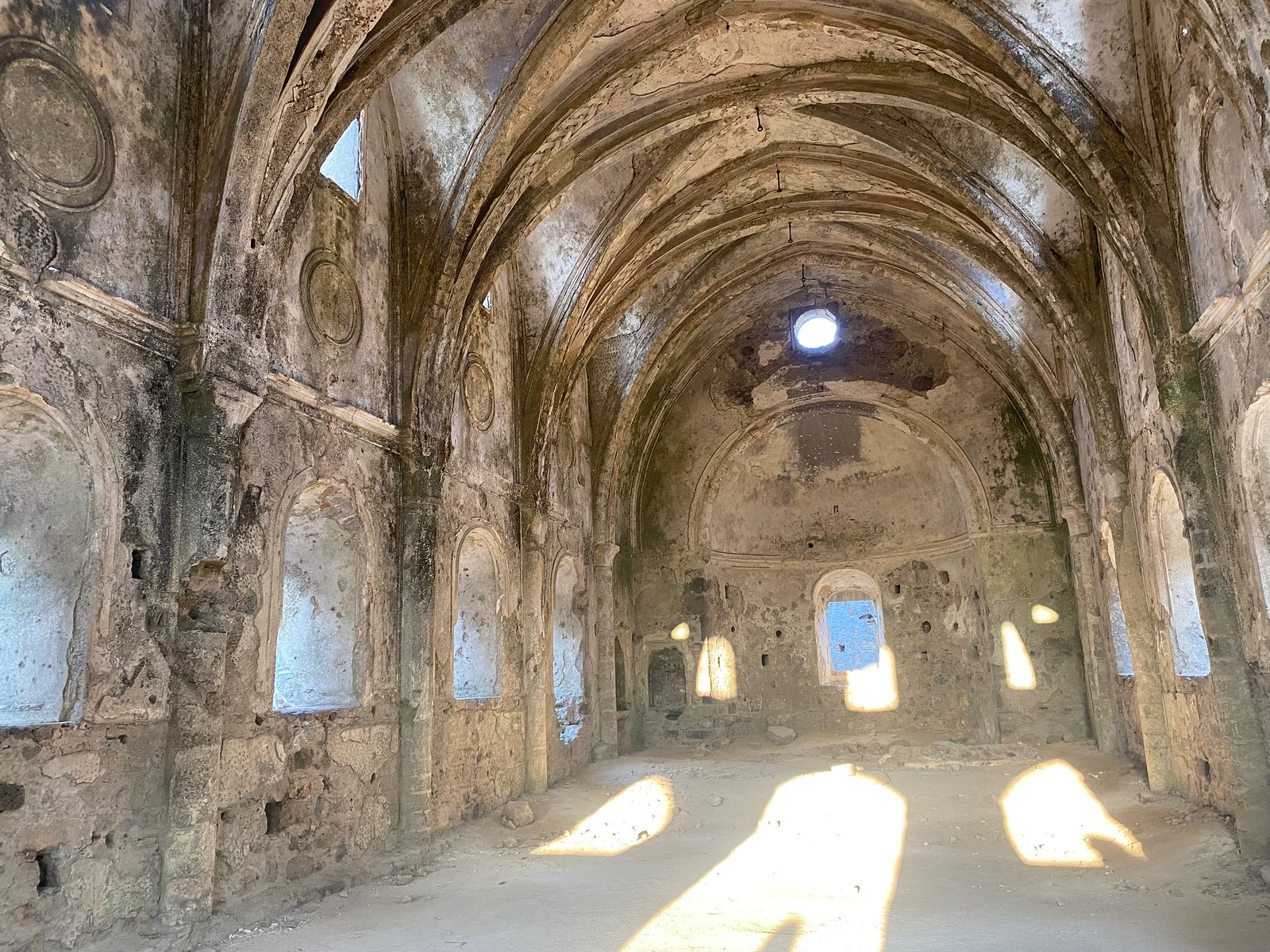
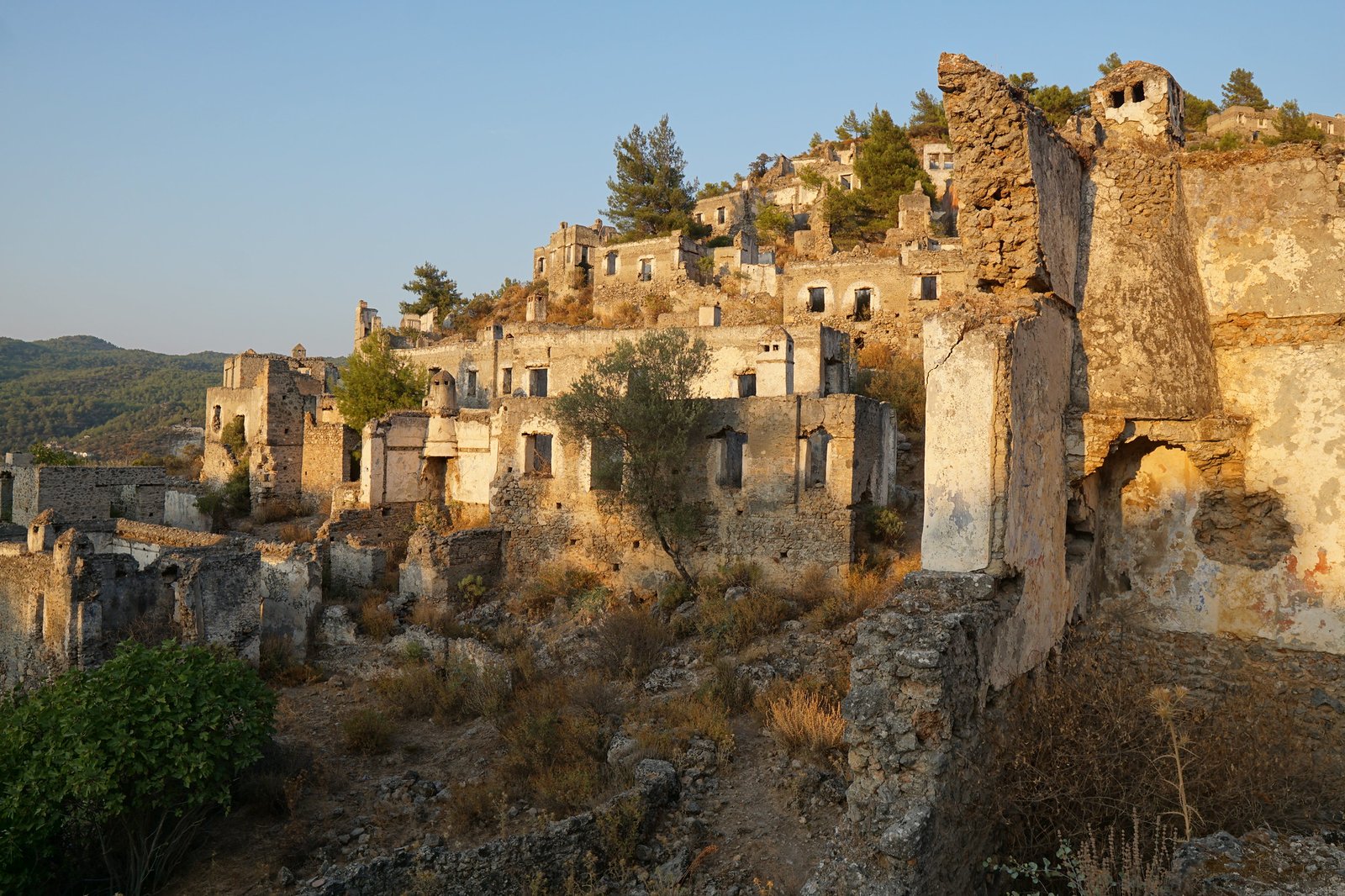
2. Flying Over the Lycian Way
Interestingly, the best way to see the Lycian Way is not by walking on land but by falling from the sky. Last year, in Colombia, we paraglided for the first time and loved the experience so much that decided to do it again, this time in Türkiye. Ölüdeniz, located on the Lycian Way, offers one of the finest spots in the world for paragliding. You jump off the Babadag Mountain, float over the beautiful Mediterranean coast, and then land on the beach right next to sunbathing crowds. In Turkish, “Ölüdeniz” means “Dead Sea”, and our only hope was that the origin of the name wasn't due to paragliders falling to their death into the sea.
As we were flying in the sky with the turquoise water of the Mediterranean Sea and Blue Lagoon spreading under our dangling feet, the paragliding instructor tapped me on the shoulder and pointed to a yellow ribbon majestically winding up and down the mountains.
“Lycian Way!” he shouted. “You can walk to Antalya.”
I looked down and saw the path infinitely stretching in both directions until disappearing from view. From this bird’s eye view, I also spotted a couple of hikers climbing up and down the famous trek. Overwhelmed with surrounding beauty — as we swirled in the sky over gorgeous Ölüdeniz—all I could do at that moment was to mentally wish them a safe, well-hydrated journey free of blisters.


3. Driving Along the Lycian Way
Finally, for those poor souls who are short on time, driving from Fethiye to Antalya is probably the fastest way to see as many places as possible along the Lycian Way. The drive along the Turquoise Coast, as this region is also known, is spectacular. Although it's possible to cover the entire distance in one day, two days allow you to enjoy the scenery and make stops. We spent a night in Kaş, where views of the Mediterranean Sea and nearby Greek islands from the rooftop of our Airbnb were simply stunning. The stretch between Finiki and Çirali was also beautiful as we drove by the sea, passing lovely coves and petite sandy beaches. During the final leg of our journey, as we approached Antalya, we stopped by Çirali Beach. Right by the Lycian Way and next to Lycian ruins, the beach is tranquil and low-key, and probably one of the best in the Turkish Riviera.

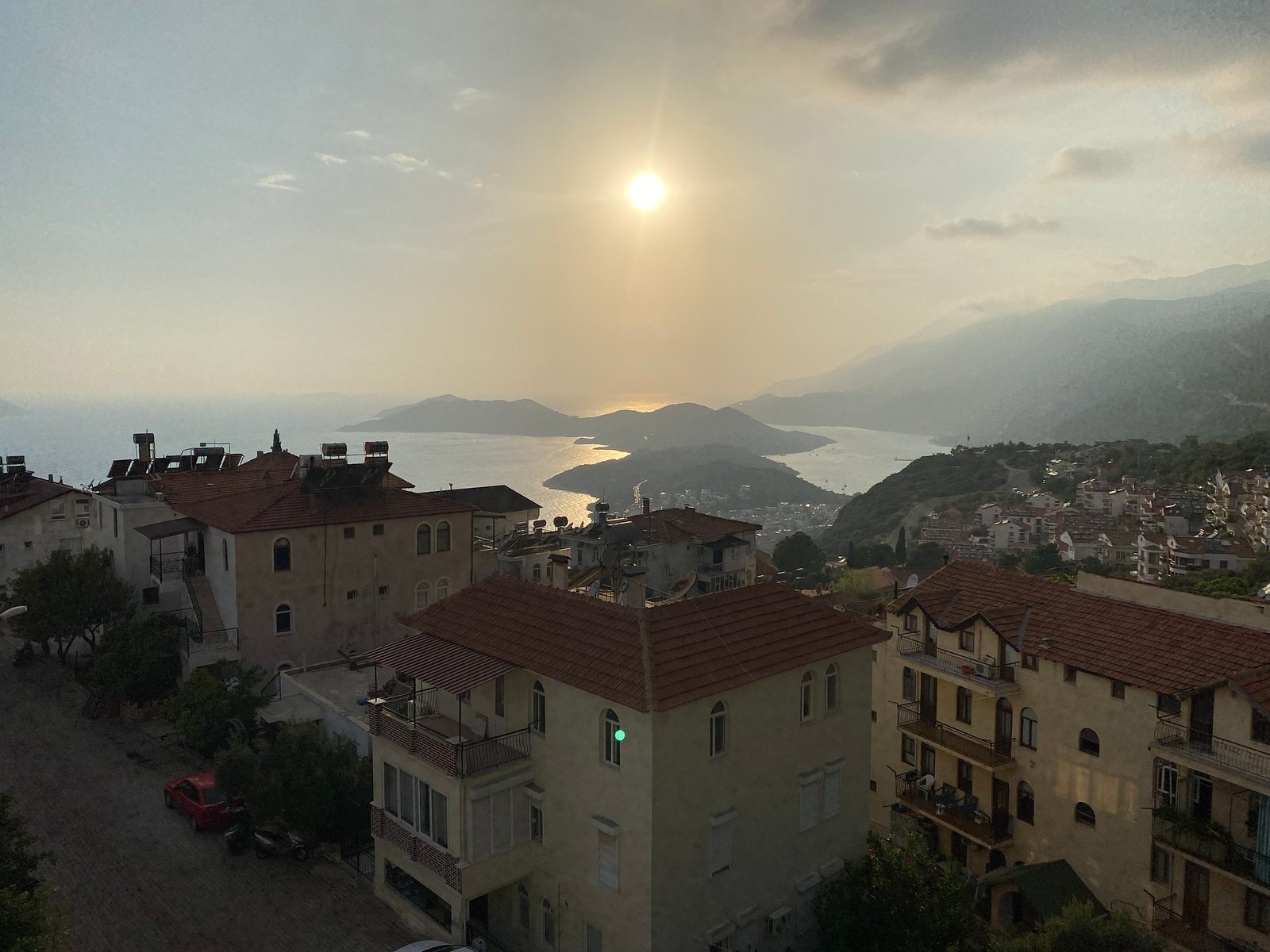
So, there you have it. The compressed plan to see it all!
Full disclosure: We still intend to hike the entire length of the Lycian Way one day.

